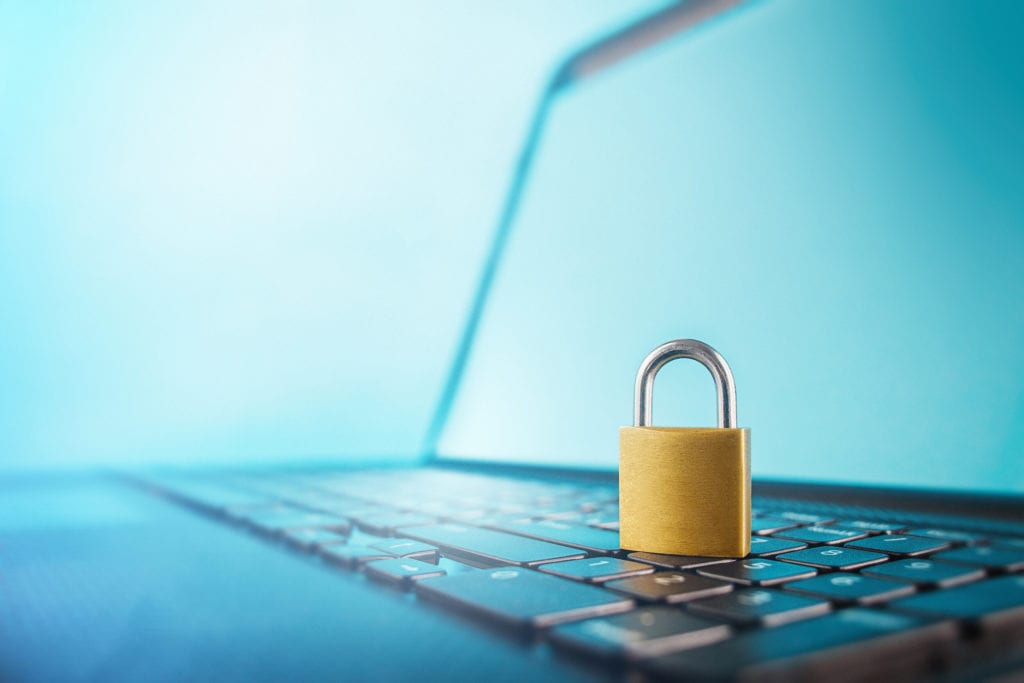

Due to the coronavirus outbreak, many people across Framingham and the rest of Massachusetts find themselves now working from home. Both businesses and government agencies have had to quickly change their way of operating to support social distancing guidelines.
What this means for businesses and their employees is that they might not have the same level of IT and network security as they do in an office environment.
Many small businesses were caught off guard when it came time to make a decision about having employees work remotely. They didn’t have a lot of time to implement protocols for data security of devices connecting from home networks.
On top of this, hackers are all over this transition, and attempting to breach home networks to gain access to sensitive business data.
5 out of 6 home Wi-Fi routers leave users at risk of cyberattacks.
But you don’t have be in constant worry about a breach of your work PC while telecommuting. There are several steps you can take to secure your device and home network to prevent a data breach.
Improve Your Home IT Security While Working Remotely (or Anytime)
Even before the coronavirus pandemic, the number of remote workers was rising steadily. It’s a win-win for employers and employees alike when it comes to productivity, cost savings, and reducing stress.
The outbreak has caused an immediate acceleration in the number of telecommuters, and hackers go where the data is, which is now transmitting though residential networks.
Here are steps you can take to significantly increase your cybersecurity posture at home and keep your work and other data safe from being compromised by a cybercriminal.
1. Separate Your “Sensitive Data” from “High Risk” Devices
Your work computer could now be connected to the same network as a teen’s cell phone, child’s gaming computer, and your new doorbell camera. Any of these devices could be considered “high risk,” which means they’re easier for a hacker to breach.
Once one device is breached, a hacker can often compromise other devices that share the same Wi-Fi connection.
Add a guest network to your router so you have two home Wi-Fi networks. Put all devices with sensitive information (like your work PC and smartphone) on one network and put all the higher risk devices on another network to keep them separated.
2. Use a Virtual Private Network (VPN)
Using a VPN to connect to the internet ensures that your data is encrypted as well as hides your home IP address for security. This is an important safeguard to ensure that no matter what network you’re connecting from (even a free Starbucks Wi-Fi) that your data is being securely transmitted.
3. Get a Managed Cloud Care Package for Your PC
Your work computer should be protected from threats and monitored regularly, just as if you were working in the office. A Cloud Care Premium plan from Pro Tech Guy offers multiple safeguards to ensure employee devices aren’t breached or infected with malware.
Benefits include:
● Managed antivirus/malware protection
● Hacker check
● Threat detection
● Hardware monitoring
● Managed updates (Windows & software)
● Unlimited cloud backup
● Remote support
● Free tune-up
4. Use Multi-Factor Authentication (MFA)
One of the biggest prizes for phishing scammers are login credentials. Once these are compromised, they’re often sold on the Dark Web to the highest bidder. With the number of retailer databases being breached regularly, your credentials could be compromised, and you might not be notified for months.
One of the best safeguards against password theft is to use multi-factor authentication for all your accounts (personal and business). MFA can stop 99.9% of account attacks.
5. Use DNS Filtering
Most phishing emails use links to malicious websites, which often fool users. They think that if they’re not downloading an attachment, then “What harm can a link do?”
But those links can take a victim to a website that immediately downloads malware onto their device as soon as the page loads. They also often go to spoofed forms designed to steal login credentials, credit card details and other sensitive information.
Using a DNS filtering application can prevent that malware download even after you click a malicious link. It checks the URL first, then will redirect you to a warning page if it looks suspicious.
6. Use Good Physical Device Security
Just because your PC is at home, doesn’t mean sensitive data (like a client health record) couldn’t accidentally get exposed if you walk away and leave it up on the screen. It’s a good idea to use a screen lock with a short time set before it comes up. You also want to ensure your work PC is properly secured when it’s not in use.
7. Keep Your Router & Devices Updated
Routers are the number one target when it comes to hacks of IoT (Internet of Things) devices. Make sure you’re regularly checking for and applying firmware updates to keep it patched for any security vulnerabilities.
The same is true of your work computer. Make sure that all 3rd party software and the operating system are updated regularly so it’s not left vulnerable to attacks.
Protect Your PC with a Cloud Care Plan from Pro Tech Guy
Cloud Care means complete protection without you having to do a thing. Our experts take care of your computer health and security remotely to make your life easier.
Contact us today to learn more. Call 508-364-8189 or reach us online.
